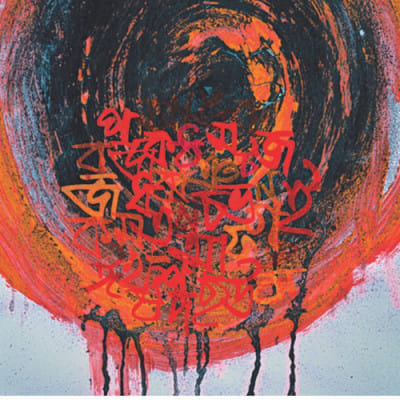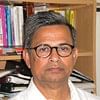On Ekushey and its global legacy

The month of February is a prized and sacred one for Bengalis. It reminds us of the sacrifices made for our beloved Bangla language and the rewards it ultimately brought in for Bengalis as a nation. Ekushey now has a global significance, too, with the declaration made in 1999 by UNESCO which recognised the date as International Mother Language Day. Today, we celebrate February 21 to enhance awareness of linguistic and cultural traditions all over the world, to protect and promote linguistic diversity through multilingual education. Thus, Ekushey has become a point of great pride for Bengalis and a source of inspiration worldwide.
The initiative to recognise February 21 as International Mother Language Day was taken by late freedom fighter Rafiqul Islam, a Bangladeshi-Canadian from Delta, British Columbia, along with Abdus Salam, another Bangladeshi-Canadian based in Burnaby. The move was taken in 1998 through the Mother Language Lovers of the World Society (MLLWS), which consisted at the time of 10 members representing seven different mother languages—Bangla, Cantonese, English, German, Kutchi, Hindi, and Tagalog. For almost two years, Rafiq and Salam worked tirelessly with UNESCO to bring about a declaration that would immortalise the language martyrs of 1952 in East Pakistan—what we now know as Bangladesh.
The proposal went through various stages with support from the governments of Canada, Bangladesh, and other countries. Prime Minister Sheikh Hasina strongly advocated for the case to UNESCO and mobilised support from friendly countries. Finally, on November 17, 1999, UNESCO adopted a resolution at its 30th General Conference declaring Ekushey—February 21—as International Mother Language Day. All 198 countries in attendance supported the UNESCO resolution, and agreed unanimously to recognise the occasion to promote multiculturalism and linguistic and cultural diversity.
The UNESCO resolution recognised the great sacrifices made by Bengalis during the 1952 Language Movement, when several students of the University of Dhaka demonstrating for the recognition of Bangla as one of the two national languages of newly independent Pakistan were shot dead by the police. The declaration further honoured the people around the world who speak about 7,000 distinct mother tongues in some 188 countries.
Unfortunately, many native and indigenous languages, including some in Bangladesh, are now under threat of extinction by more dominant languages. According to one source, one language dies every 14 days; as a result, by the year 2,100, nearly half of these 7,000 languages will most likely have disappeared. The worldwide celebrations of International Mother Language Day have increased awareness of the need to save native languages, and the value of multilingualism and linguistic and cultural diversity. February 21 has thus created a global family of people committed to speaking in their mother tongues; it is a community for the protection and conservation of all mother languages.
Language isn't just a means of communication. It is also the most powerful tool for preserving and developing one's culture and heritage. Education in the native language, particularly in a multicultural and multilingual context, provides a sense of inclusion. It also fosters intercultural understanding and helps build global citizenship. Besides that, International Mother Language Day perpetuates the awareness that adults—both men and women—should achieve literacy and numeracy, which supports the current UN Sustainable Development Goals (SDGs 4.6). Therefore, linguistic and cultural diversity are our best chances for a better future, through creativity, innovations, and inclusion.
International Mother Language Day was celebrated for the first time on February 21, 2000 and was inaugurated by a ceremony held at UNESCO headquarters in Paris with Rafiqul Islam as an invited guest. Since that year, the day is celebrated globally every year by member countries under the leadership of UNESCO as well as by many social and linguistic communities and groups around the world. Many mother language monuments have been built—inspired by the Shaheed Minar (Language Martyr's monument) in Dhaka—in countries such as Canada, Australia, Japan, USA, UK, Italy, Denmark, and Norway. In 2001, the Government of Bangladesh, in recognition of its leadership, efforts, and contributions, awarded the MLLWS the Ekushey Padak. In 2016, the government awarded the Swadhinota Padak, the highest civilian award, to Rafiqul Islam (posthumously) and to Abdus Salam.
The year 2020 marks 20 years of International Mother Language Day. The date of February 21 has assumed new dimensions both at home and in the international arena. For Bengalis, it has created an identity that is now global. Ekushey is viewed as the source of independence and secularism that can inspire future generations to come. The Shaheed Minar at the Dhaka University campus and the annual celebration of February 21 all over Bangladesh is a clear demonstration of this national sentiment. With a total of nearly 250 million speakers, Bangla is the sixth most spoken language in the world today, and International Mother Language Day exists as a symbol of linguistic rights and identity—a gift from Bengalis to the world.
Mohammad Zaman is an anthropologist. Email: [email protected]
Mohammad Aminul Islam is the President of the Mother Language Lovers of the World Society, Surrey, Canada.
Email: [email protected]

 For all latest news, follow The Daily Star's Google News channel.
For all latest news, follow The Daily Star's Google News channel. 



Comments